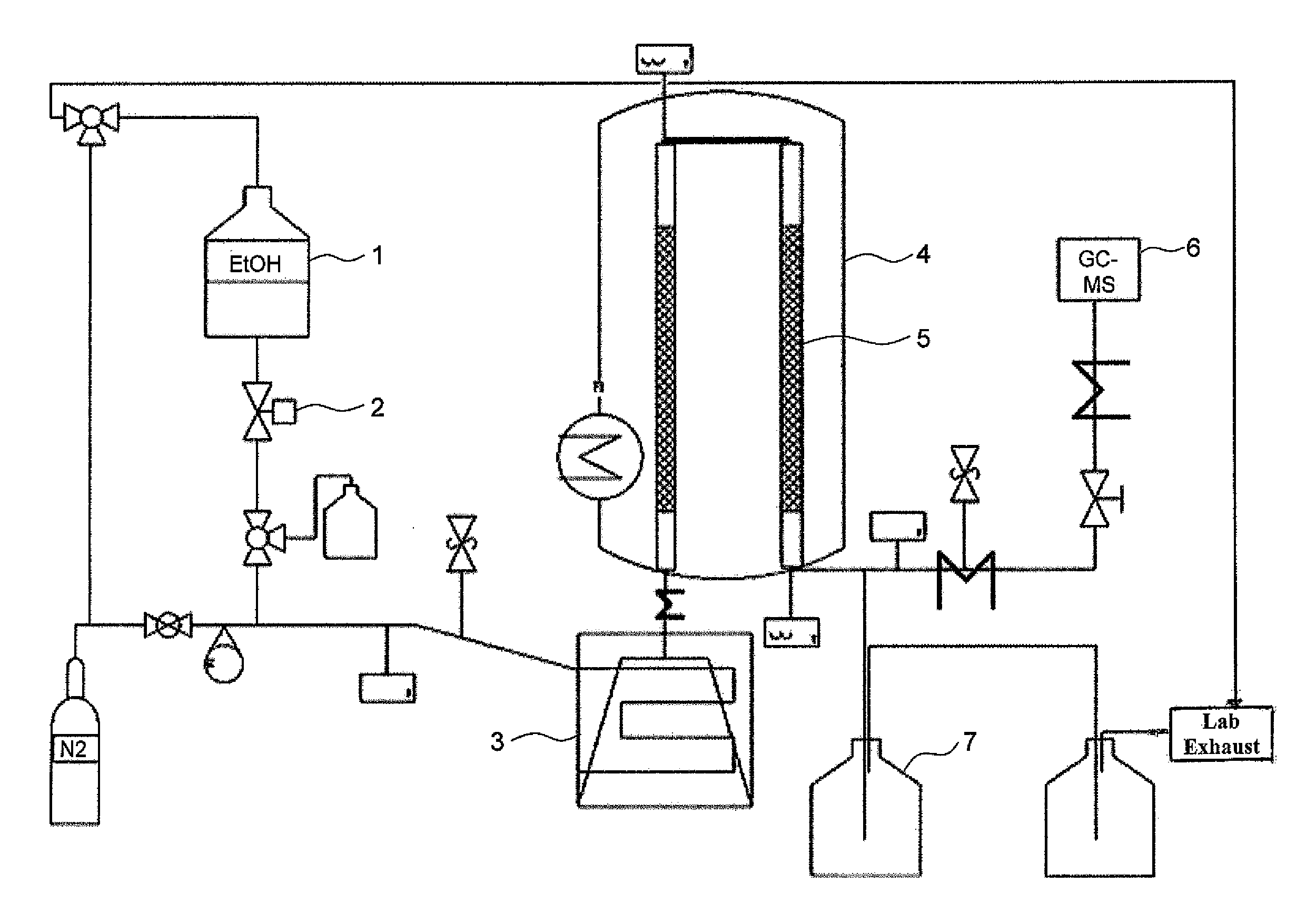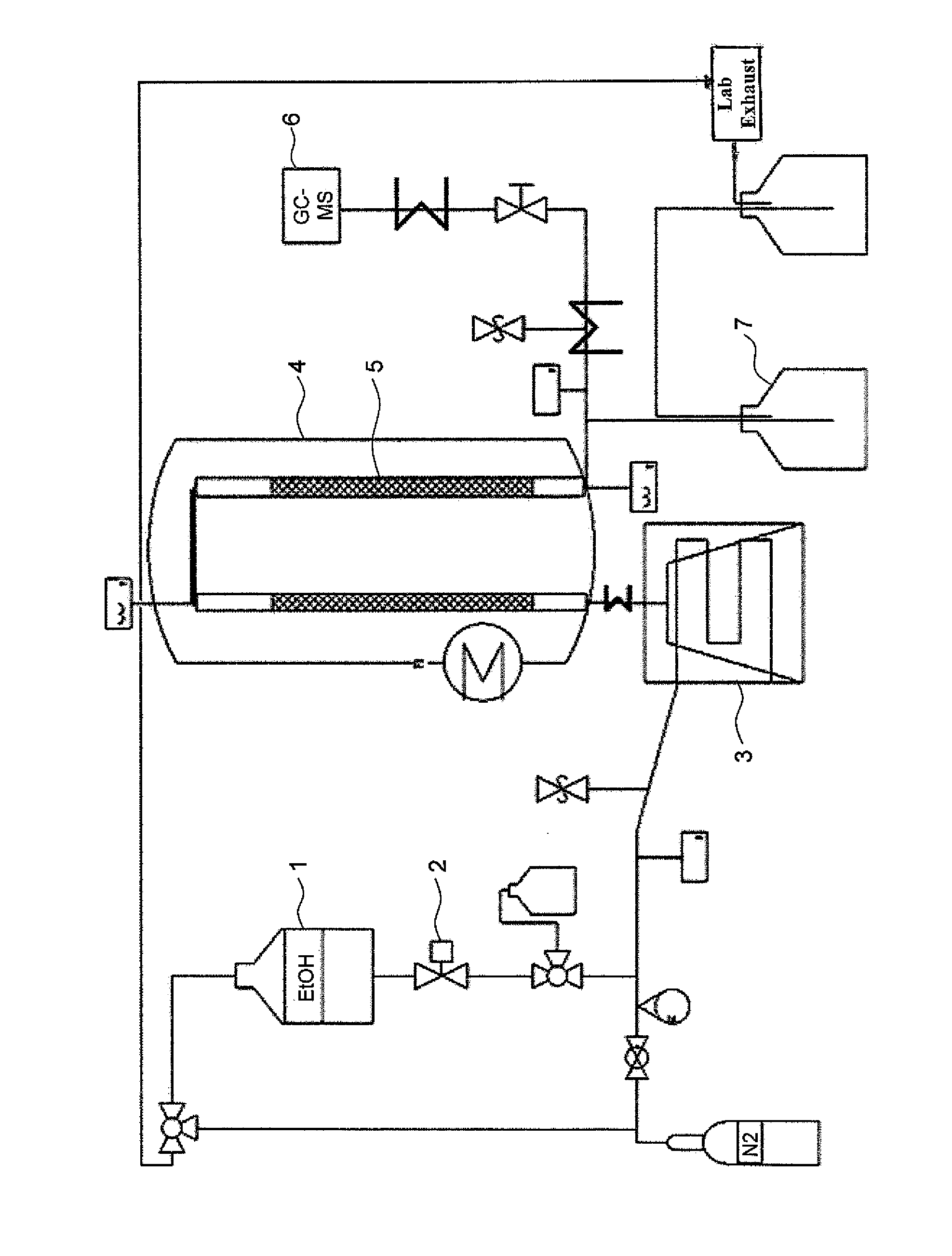Catalytic conversion of alcohols and aldehydes
a technology of aldehyde and catalytic reaction, which is applied in the direction of hydroxy group formation/introduction, carbonyl group formation/introduction, oxygen-containing compound preparation, etc. it can solve the problems of large amount of co2/sub>2 and methane, which is even more damaging to the climate, and has to be separated with a great deal of energy. , to achieve the effect of reducing or decreasing
- Summary
- Abstract
- Description
- Claims
- Application Information
AI Technical Summary
Benefits of technology
Problems solved by technology
Method used
Image
Examples
example 1
[0146]Pellets produced according to the invention from shaped activated carbon are comminuted mechanically and the fragments (1-2 mm fraction) are introduced into a stainless steel reactor. The reactor has an internal diameter of 9 mm and a length of 135 mm. The mass of catalyst introduced is 10 g or 45 g. A schematic depiction of the experimental set-up used is shown in the one FIGURE.
[0147]Both pure ethanol and aqueous ethanol are possible as starting material or reactant. Mixtures of various alcohols and aldehydes are likewise possible.
[0148]The reactants are located in a pressure vessel 1 and are metered via a calibrated mass flow regulator 2. Before entry into the vaporizer, inert gas, generally nitrogen, can optionally be added. The volume flow is set by means of a needle valve with a floating body flowmeter and is typically in the range from 0 to 40 l of N2 / h. The reactants are vaporized and heated to up to 380° C. in an electrically heated tube 3. ...
example 2
System Under Superatmospheric Pressure
[0153]To carry out experiments under superatmospheric pressure, too, a second plant in which the ethanol is conveyed by means of an HPLC pump from a reservoir into a vaporizer heated to 300° C. by means of oil was utilized. The reaction proceeds over 45 g of the catalyst described in a reactor which has a volume of 120 ml and is heated electrically to the reaction temperature. The product is condensed in two water-cooled heat exchangers after the reaction. Experiments are carried out at a pressure of up to 21 bar (absolute) using this plant. The mass flow of ethanol is in the range from 45 to 90 g / h. The results are shown as experiments 5 and 6 and also 9 to 13 in the tables.
[0154]An increase in pressure leads first and foremost to a significant reduction in the concentration of aldehydes in the product. The proportion of higher alcohols likewise increases significantly compared to the process under atmospheric pressure, even at low temperatures...
PUM
| Property | Measurement | Unit |
|---|---|---|
| temperatures | aaaaa | aaaaa |
| temperatures | aaaaa | aaaaa |
| temperatures | aaaaa | aaaaa |
Abstract
Description
Claims
Application Information
 Login to View More
Login to View More - R&D
- Intellectual Property
- Life Sciences
- Materials
- Tech Scout
- Unparalleled Data Quality
- Higher Quality Content
- 60% Fewer Hallucinations
Browse by: Latest US Patents, China's latest patents, Technical Efficacy Thesaurus, Application Domain, Technology Topic, Popular Technical Reports.
© 2025 PatSnap. All rights reserved.Legal|Privacy policy|Modern Slavery Act Transparency Statement|Sitemap|About US| Contact US: help@patsnap.com



